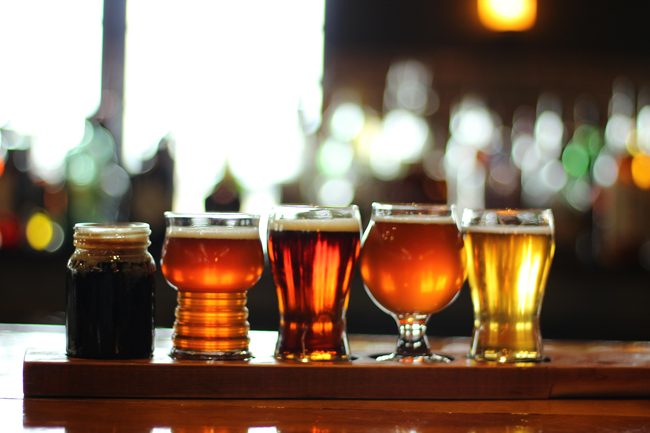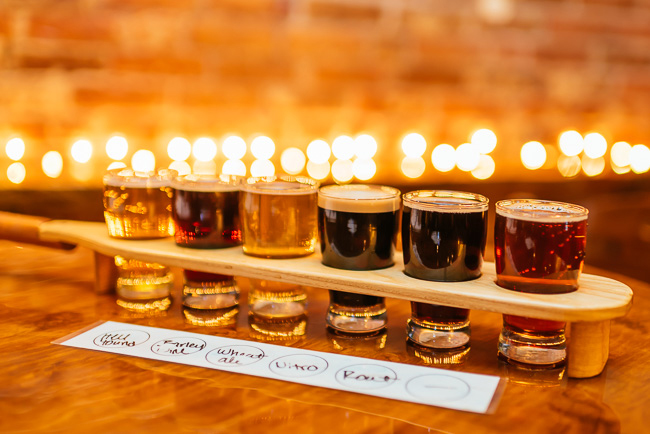At an event in Minnesota’s recent past, Todd Haug was still the brewing wizard at Surly. While discussing beer, someone in attendance asked why Haug made such bitter, hoppy beers. Haug took offense to that, proclaiming somewhat dumbfounded that he made complex beers with hoppy fruity notes, not just pine needle bitter IPAs that had become all the rage during Minnesota’s craft beer boom.
At least, that’s what I can remember Jeff Merriman telling my brewing class seven years ago. In the last seven years, over eight cohorts, Dakota County Technical College has had a Brewing and Beer Steward Technology program. Merriman has been the instructor the entire time, and this story came about when talking about tasting beer in one of the first classes he taught.
When it comes to tasting beer, everyone is doing it right. But not everyone talks about it in a way that makes sense. And that’s not to be pinkies-up-wine-drinker snooty. But visit any forum or review site like Untappd, and the fact of the matter is that “hoppy” means different things to different people.
ONE WORD, MANY MEANINGS
Merriman, who also worked at Northern Brewer for many years, has an extensive brewing background that spans to the beginning of Minnesota’s wave of breweries post Surly Bill when beer makers could open taprooms and they then exploded onto the scene. In short: he’s heard a lot of beer tasting terms over the years.
“There’s a lot of terminology that’s thrown around in the beer industry that sometimes seems to be one thing, and perhaps has a different meaning to it,” Merriman said.

In the case of hops, many consider “hoppiness” and “bitterness” to be the same. They aren’t. The hoppy presence in a hazy IPA, for example, can often convey fruity and/or floral notes.
“Hoppiness can be more described as the actual aroma or flavor characteristic of the plant in terms of, you know, is it floral, is it fruity, does it smell like grapefruit or oranges?,” Merriman explained. “Or is it piney or maybe soapy?”
And that bitter taste that is popularly associated with hops can come from other parts of the beer. Roasted malts can offer bitterness in things like an English or American style stout.
Another often used (but fairly weird) flavor term is “dank.” Some waffle on whether that means overripe fruit like mango (myself included) or just means what brewers want it to mean: weed.
“We’re basically trying to describe the beer as having a weed- or marijuana-like quality to it,” Merriman said. “I don’t think there’s a problem with the beer industry saying that this beer kind of smells like weed.”
If you think of dank in a way you would usually use it, it can make you think of a cold, damp, unfinished basement. Not very appetizing when drinking beer.
THE FLAVOR OF NOSTALGIA
When it comes to learning how to taste beer, you simply have to do that: taste beer. There is a lot that comes into play like aroma, flavor, mouthfeel, and even environment. Chances are, that German lager tasted great in Germany if you were on vacation and having a great time. Or, if you bought a $50 bottle of rare beer, that might affect how you think of the quality of that particular beer.
“There’s some emotional, almost, nostalgia that’s involved,” Merriman said. “If you’re drinking wine in France, it’s the best French wine you’ve had. In some ways, it’s just in your head. If you’re looking for a flavor in beer you’ll find it, but it doesn’t necessarily mean that it’s there.”
One thing beer doesn’t seem to get its due is how it pairs with food. Wine and food is definitely a thing. But “beer is still a little bit behind the times when it comes to pairing with food,” Merriman said.

“Beer doesn’t always get the same recognition as being a great beverage to pair with food,” he continued. “But I make the argument that in some ways, it’s actually more qualified, especially in some areas where wines just don’t necessarily tend to pair well with certain foods.”
Where may that be? Any type of spicy food. High ABV with spicy food can be like throwing a dried pine tree and its needles on top of a campfire — it’s going to surge that spice. Carbonation is also a player.
“Anything that’s oily, any kind of fatty food, or any kind of food that leaves a slick aftertaste or sensation on your palate, the carbonation aspect is really kind of an X factor when it comes to pairing,” Merriman said. “That scrubbing bubble action of the carbonation can help to break down that fattiness and help you wash that down back into kind of a clean palate again.”
Beer works really well in these pairing blind spots. And if you’ve never paired a raspberry or fruited lambic, you owe it to yourself to drink one with a chocolate cake.
You can often find breweries offering beer and food pairing events, and these are usually a good way to explore how a bock or IPA may work with a gouda or brick of aged, crunchy cheddar. Some places seem to pair things at random, but places like Little Thistle Brewing in Rochester, Minn. are trying to hold classes to educate its patrons and staff deliberately. After all, it’s not fun to ask a worker about a beer and just hear that “it’s malty.”
“We offer beer education classes for the public, but also provide regular staff beer education,” Little Thistle co-owner and head brewer Steve Finnie said. “The class environment allows you to sit with other people and taste the same beers. Every palate is different, people taste different flavors, are sensitive to different off flavors — and no one is wrong.”
The way Little Thistle does it is by doing a blind taste test, which is great for eliminating bias. Of course, you’re just drinking Little Thistle beer at the classes. But try getting a group of friends together with five beers, some from very popular breweries, and some from ones that aren’t, and blindly taste and rank them. You’ll be surprised how you rate beers when eliminating that bias.

Taking a class or just reading about flavors can help you learn that if a hefeweizen tastes like banana, you can call it estery. Or that the phenolic flavor of a Band-Aid is something that should not be in beer. But there are also positive phenol flavors like clove, which work in tandem with the banana ester in hefeweizen to create a great tasting beer.
BEER FLAVORS CAN BE A LITTLE COMPLEX
The world of tasting and terminology is vast. To swing back to terms, Merriman wants to get on a soapbox about diacetyl. This essentially describes butter or buttered popcorn.
“That flavor is almost always considered an off flavor in beer and it doesn’t belong in beer in most cases,” Merriman explains.
If you’re drinking a helles, you might get a buttery note from the malt. Don’t confuse this with diacetyl. The only way to really get better at discerning that is to keep tasting beer (there are even off-flavor beer kits you can buy to educate yourself on different off-flavors like this one). Simply buy a kit, open something like a clean lager or a beer you know well, and drop some off-flavors into different pours and you’ll soon be tasting some truly awful things.
Be open when tasting beer and remember that your palate will be a bit different than the next person’s, but that there are technical aspects to beer that make it good. Like everything, it’s a learning process.
“The first approach for development is practice,” Merriman said. “As funny as it sounds. But I think in terms of tasting beer, I think a lot of beer drinkers drink beer and don’t necessarily think very analytically about it.”
The next time you have a beer, take a good sniff. Take the mouthfeel into account, and try to put flavor terms to the beer.

